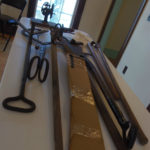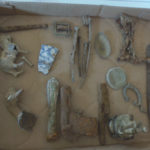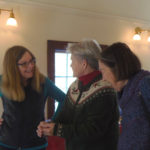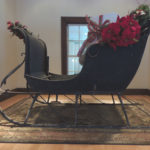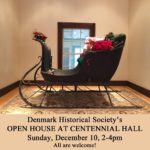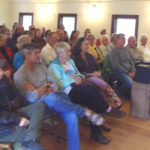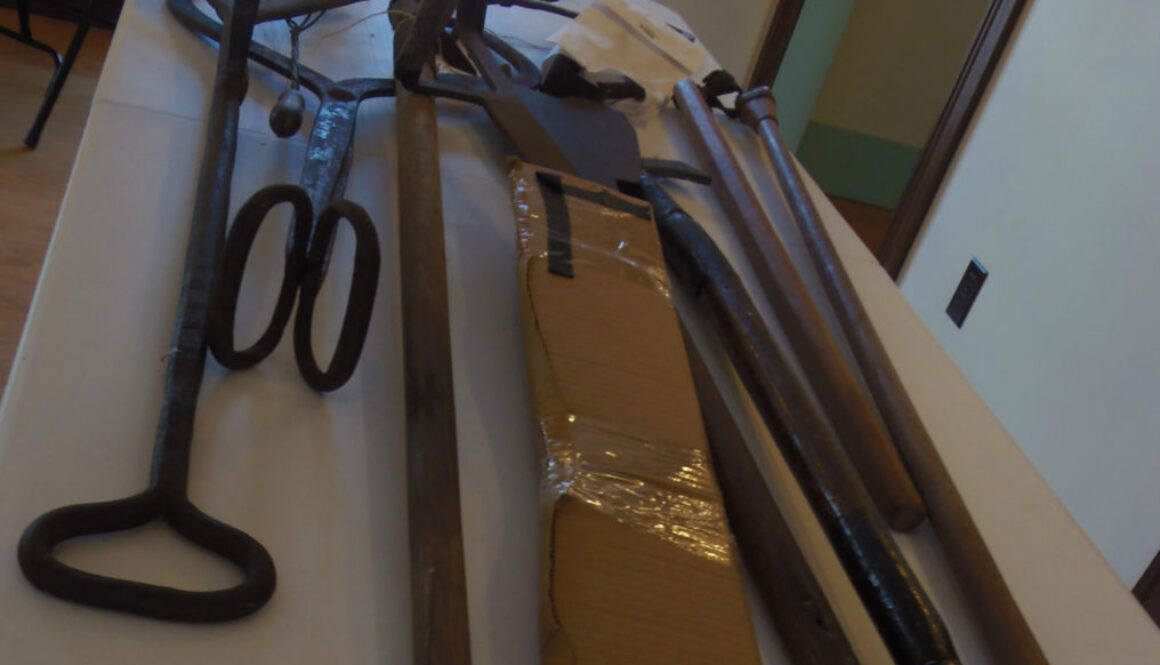
Clare McKeagney
Posts by Clare McKeagney:

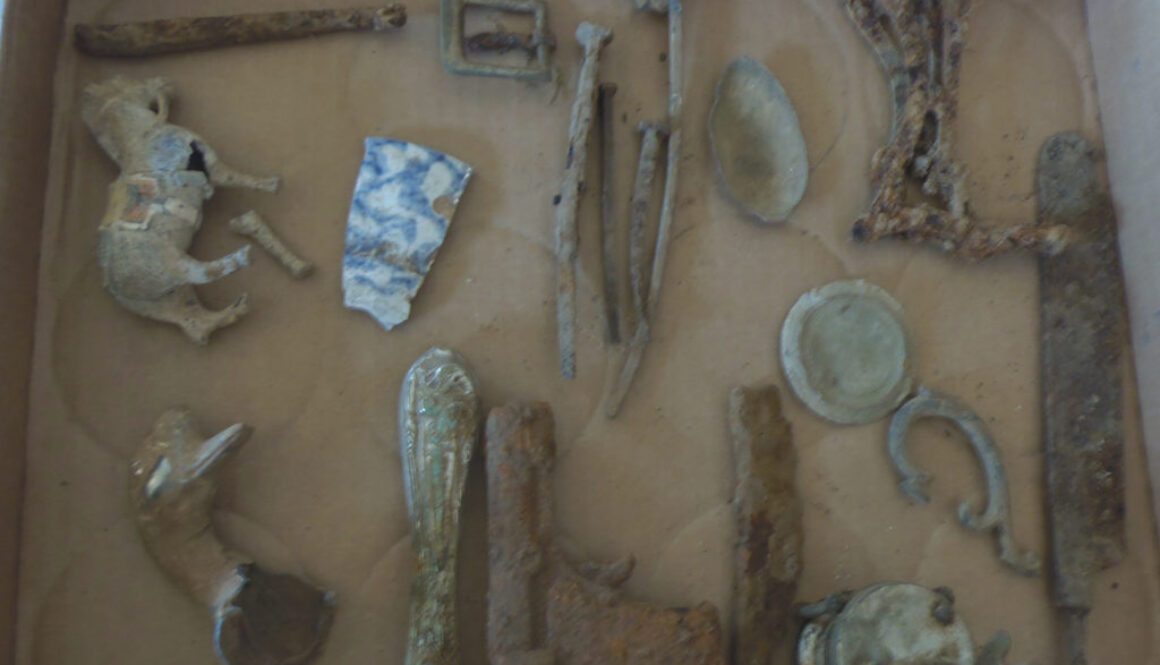
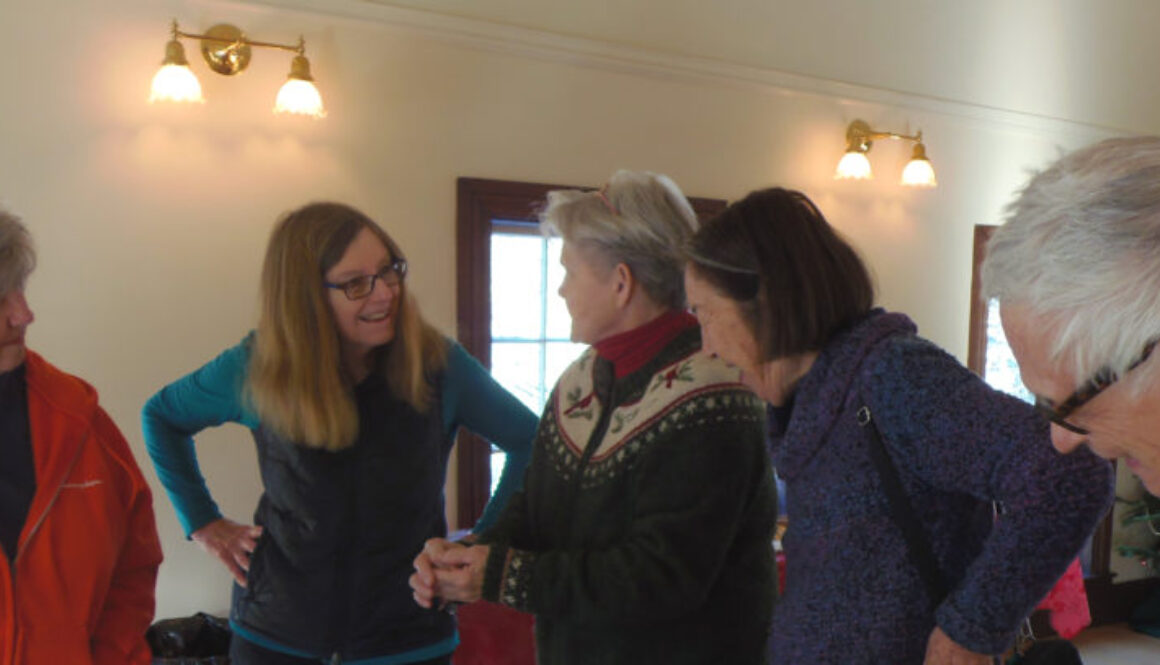

The Denmark Historical Society invites everyone to a Christmas Open House at Centennial Hall in the village of Denmark, on Sunday, December 10th from 2-4pm. Historic artifacts found by KittyWalsh will be on display, as well as selected artifacts from the Historical Society’s collection. Ms. Walsh has spent many hours at old homestead sites in and around Denmark, looking for artifacts with her metal detector and her efforts have been rewarded with some interesting finds. She has found oxen shoes, old coins, old rings, pocket watches, and old buttons from the 1800s. She has found horse tack, pewter spoons and more. Also on display are several examples of early mill machinery, illustrating early water-powered technology from the 19th and early 20th centuries, including two box nailing machines and an 1890 four-sided planer, as well as a beautiful horse drawn sleigh, and a hand painted stage curtain which was generously donated by Don and Marion Monson.
Centennial Hall, located at 72 West Main Street in Denmark, was originally built in 1876 and has recently been restored. Refreshments will be served and Kitty will be on hand to talk about her artifacts collection. There is no charge for the event but donations to the Denmark Historical Society are gratefully accepted.
October 21, 1947 is a date few residents of Brownfield, Denmark, Fryeburg and Hiram will not forget – the day the fire started. With support from ACE Insurance Agency Denmark Historical Society invited Jo Radner to perform “Burnt Into Memory: Stories of the 1947 Brownfield Fire” on a rainy afternoon at Centennial Hall with a roomful of guests.
Jo Radner performing:
Jo Radner & her audience:
At the Maine Archives & Museums conference I participated in a workshop I didn’t think at first I would have much interest. But, it may have become the workshop that has a long lasting effect.
Jon Ippolito, UMO professor, gave a presentation about emulation and its use as a preservation resource.
What is emulation? I certainly had not heard of the term before. As defined by Wikipedia:
In computing, an emulator is hardware or software that enables one computer system (called the host) to behave like another computer system (called the guest). An emulator typically enables the host system to run software or use peripheral devices designed for the guest system. Emulation refers to the ability of a computer program in an electronic device to emulate (or imitate) another program or device.
Do you have a wonderful address book program from Windows 3.1 that you prefer to use? How about documents stored away using WordPerfect? Or financial records using older versions of QuickBooks or other software? Do you have documents stored on floppy disks? Do you own a Betamax machine?
Wouldn’t you like to access them?
And there is no way that modern software recognizes the file name extensions? Frustrating.
Well, users from the gaming and arts world are here to rescue you. Many gamers wanted to play all the “old-fashioned” games and the consoles of today would not play them. So, resourceful gamers wrote code to create software where you could play them. And then created more code – do you want to play the game the old-fashioned way? Or with modern gaming technology?
Software and hardware engineers recognized the achievements of the ametueurs writing codes who began creating code to open files, play games, use a Betamax machine, etc. The code is often open source.
Mr. Ippolito’s presentation was from an Apple laptop using Windows 10. Isn’t that incredible? Microsoft and Apple certainly do not want users to become cross-platform. If you want to have the graphics ability of Apple and the computing ability of Microsoft users now have the choice.
There is so much more importance to this topic. And it is beyond my technological ability to go further with this. At the end of the message I will share some important links if you want to research this further.
Mr. Ippolito was a part of a consortium who helped the Guggenheim Museum. There was an exhibition called Seeing Double “One work chosen to test emulation is Grahame Weinbren and Roberta Friedman’s video piece The Erl King (1982–85), a combination of obsolete hardware, artist-written software, and custom-made components. Heralded as one of the first works of interactive video art, The Erl King invites the viewer to control the work’s narrative structure through the use of a touch-screen monitor.” The original art installation used now obsolete technology. The first exhibition was revolutionary in its day and exhibitors wanted to recreate this important exhibition to inspire a new generation. A group of scientists were assembled to recreate that exhibition. And using emulation hardware and software they were able to emulate the exhibition.
How does this revolutionary technology have anything to do with museums and archives?
– Recreate and use documents, financial records, Betamax files, etc.
– Offers multiple preservation strategies
– Save spreadsheets as comma separated text
To my right at the next table were the curators of the large state museums. They nearly leapt out of their seats think of all the uses for their institutions. The discussion and questions this talk had for all present…. Infectious to see people’s excitement.
I hope my simplified description of emulation will inspire you to further research it and see the uses in your life.
Mr. Ippolito teaches a certificate program at the University of Maine. Two of his students now work for Maine museums and in government who gave presentations at the conference.
Sources:
https://en.wikipedia.org/wiki/Jon_Ippolito
https://archive.org/search.php?query=emulator
https://en.wikipedia.org/wiki/Emulator
http://pastexhibitions.guggenheim.org/emulation/
http://www.domesdaybook.co.uk/
Written by Lee Ann Shand November 2017
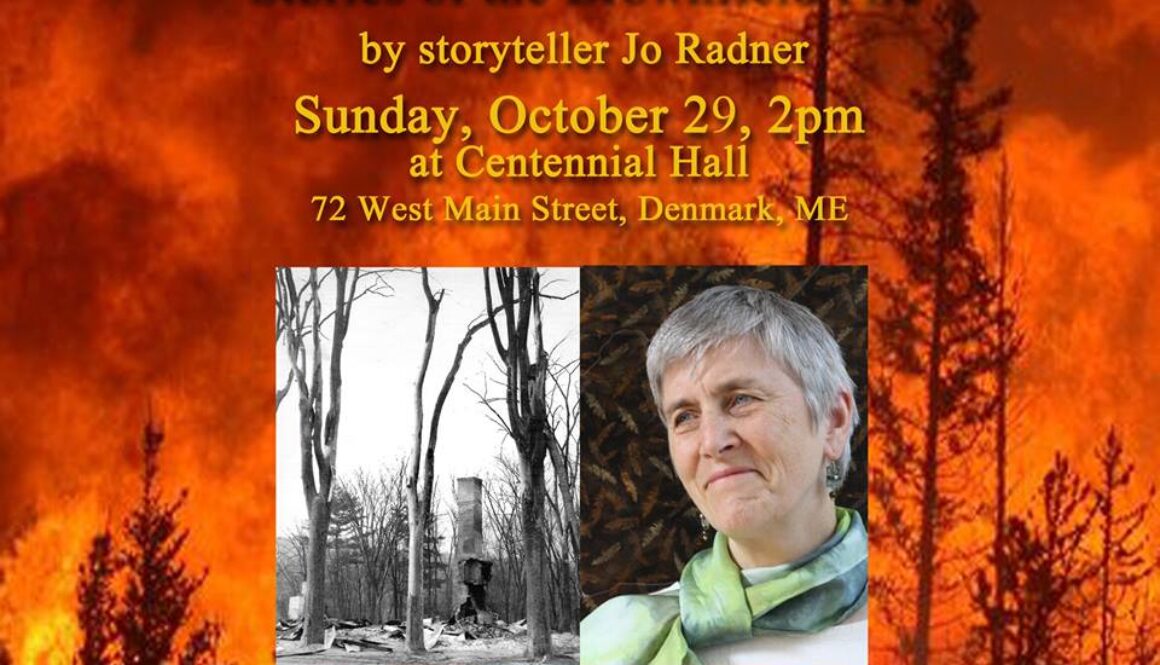

JO RADNER PERFORMS “STORIES OF THE BROWNFIELD FIRE”
In honor of the 70th anniversary of the Brownfield Fire, the Denmark Historical Society has asked storyteller Jo Radner to perform “Burnt Into Memory: Stories of the Brownfield Fire,” at Centennial Hall in Denmark on Sunday, October 29th at 2pm.
Some Mainers still remember – in fact, cannot forget — October of 1947, when, after a season of terrible drought, wildfires burned all over the state. Brownfield was one of the worst-hit areas: 80% of the town, including all churches, schools, post offices, and other public buildings, was completely destroyed in the space of a few hours.
In the face of the fire, Brownfield residents responded with courage and care – and even obstinacy in a few cases like that of retired schoolteacher Mabel Stone. “She had her little dog Woofie with her, and she had a plan: she was going to stay at her house and fight the fire with a broom, a bucket of water, and a snow rake….” Facing the devastation after the fire, neighbors ingeniously made do, shared what they had, and rebuilt what they could.
Lovell storyteller Jo Radner spent a year interviewing people who experienced the Brownfield Fire – residents who did and did not lose their homes, as well as others who aided in the rescue and rebuilding effort. From those interviews and from letters and historical photographs and newspaper reports, Radner has created a powerful story of terror, courage, neighborly responsibility, recovery, and – yes – even humor.
Storyteller and author Michael Parent has called “Burnt into Memory” “a tremendous story for our time, a story of hope and connectedness between humans at a time when hopelessness and disconnectedness are the rampant order of the day.”
Proceeds from the program will go to the Denmark Historical Society. Centennial hall is located at 72 West Main Street in Denmark, ME.
We look forward to seeing you at Jo Radner’s performance of “Burnt into Memory” Sunday, October 29th at 2 PM at Centennial Hall!
Denmark Historical Society announces a revolutionary plan for its archives. For several years volunteers have spent hours sorting and cataloging the collection. It’s time for the public to use the archive and we want to make that possible.
We have the bold plan to digitize our collection of ledgers from businesses and the municipality, diaries, almanacs, records, photographs and postcards.
We are preparing our community’s historic collection for the future by having it professionally scanned. We teamed with the folks at Records Management Center to scan our collection to the highest standards available today.
With financial assistance from the Birch Cove Fund, Denmark Lions Club and donations from within the community we are moving forward with the digitizing process.
Items from the collection will be made available to community members, researchers, students, and genealogists.
Denmark Historical Society will create an archive without walls and schedules and geography, giving users the ability to research, write, and publish Denmark’s history using the digital archive. This is a huge, multi-year project and we will be able to reach former Denmarkians and the world with our museum having no walls. The gift to the community – a lifetime.

